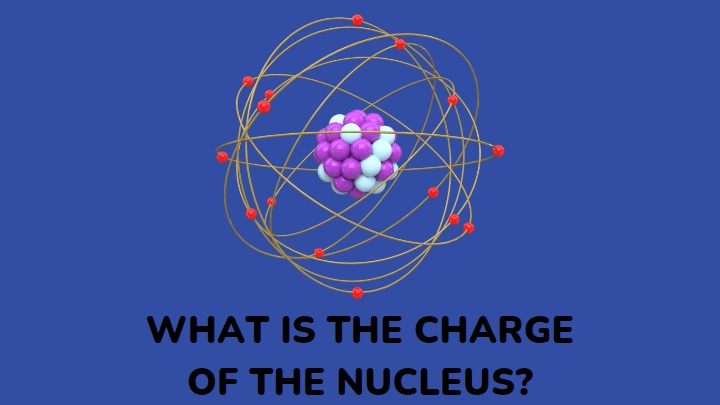The nucleus of an atom is the core of the atom. It comprises protons and neutrons, which are charged and uncharged particles, respectively. The charge on the nucleus is known as the nuclear charge (Z) and it is determined by the charge on the protons since neutrons are neutral.
However, the nuclear charge differs for different atoms because all atoms have their unique atomic number. But, there is a universal property that is common to all nuclei. This is the positive charge because of the protons.
In this article, we’ll be taking a look at the charge of the nucleus, the effective nuclear charge, and the trend on the periodic table, among other interesting details. Read on.
What is the charge of a nucleus?
The nucleus of any atom will always be positive because it depends on the number and charge of the total protons in the atom. The nuclear charge of any element is equal to its atomic number.
For instance, the charge on the nucleus or the nuclear charge of a sulfur atom is 16, which is the same as its atomic number. Also, the nuclear charge for sodium is 11, lithium is 3, neon is 10, and zinc is 30.
Is the nuclear charge the same as the effective nuclear charge?
No, it is not. Effective nuclear charge, Zeff, is different from the nuclear charge, Z. As mentioned earlier, Z is the same as the atomic number. The Zeff is a difference between Z and the shielding constant (S).
Furthermore, Zeff describes the charge the protons in the nucleus have on the valence electrons. This effect is determined by the shielding effect.
The shielding constant, S, of an atom can be calculated using Slater’s rule.
Below is how to use Slater’s rule to find the shielding constant for the s and p orbitals:
- The first step is to write out the electronic configuration of the atom as follows: (1s) (2s 2p) (3s 3p) (3d) (4s 4p) (4d) (4f) (5s 5p)…
- Electrons in ns and np-level are screened by electrons of the same and lower energy levels. This implies that any electrons above the energy level do not have any screening effect on electrons with low energy levels
- Each electron of an (ns np) level has a 0.35 shielding effect on the valence electron in the same group. This also applies to electrons of the nd or nf level for electrons in the same group
- Each electron on a lower quantum shell like the (n−1) shell will shield the valence electron by 0.85
- Electrons on much lower quantum energy levels like the (n−2) will shield the valence electron by 1.0
- Applying these rules, you can find the shielding constant of any element
- For instance, we can find the shielding constant for Oxygen-8 as follows:
- The electronic configuration of oxygen is (1s)2 (2s, 2p)6
- The (1s)2 electron has a 0.85 effect on the valence electron (2 x 0.85)
- Also, the (2s, 2p)6 electrons have a 0.35 shielding effect (6 x 0.35)
- The sum of both gives a shielding constant of 3.80
Is nuclear charge the same as ionic charge?
No, it is not. Nuclear charge is the total charge on the nucleus of an atom. On the other hand, the ionic charge is due to a gain or loss of electrons in the valence shell of the atom.
Furthermore, while nuclear charge depends on the number of protons, ionic charge also depends on the electronic configuration of the atom and the number of valence electrons it has.
What is the trend for the nuclear charge on the periodic table?
Nuclear charge increases across the period and down the group. However, an increase in nuclear charge causes a decrease in atomic size.
As the attraction between the nucleus and valence electrons increases, there is a pull that causes the atom to shrink and reduce in size.
FAQs
Does the mass of the nucleus determine the mass of the atom?
Yes, it does. The nucleus carries the heaviest subatomic particles: the protons and neutrons. Therefore, it is responsible for the mass number. The electron is almost weightless and occupies only volume.
What is the mass of a proton in the nucleus?
Each proton has a resting mass of 1.6749 × 10−27 Kg (1 amu).
What is the charge and mass of a neutron in the nucleus?
The neutron in the nucleus is a neutral particle (it has no charge), but it has a mass of 1.6749 × 10−27 Kg.
Conclusion
The nucleus of every atom is positive because nuclear charge depends on the protons. It also depends on the attraction between the nucleus and the electrons that revolve around it. Therefore, atomic size will decrease as nuclear charge increases.
A greater charge will pull the electron more inward and reduce the size of the atom. In simple words, the nuclear charge increases across the period and down the group.
You can also learn about the trend of polarity on the periodic table and its relationship with other trends like electronegativity.
Thanks for reading.
